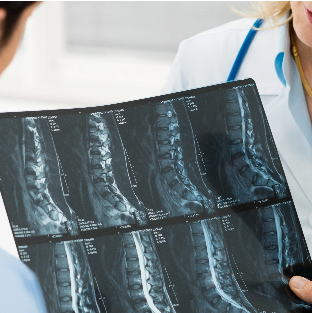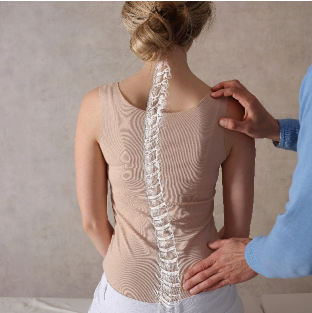Hello, I’m Dr. Jeremy Smith, a spinal surgeon based in Orange County, specializing in compassionate patient care and minimally invasive techniques. This guide focuses on a significant advancement in spinal surgery: Total Disc Replacement (TDR). This procedure has transformed the lives of many patients suffering from chronic back pain. The blog will cover the benefits of TDR, the different types, its success rate, and other relevant information to provide a comprehensive understanding of this innovative solution.
What is Total Disc Replacement?
Total Disc Replacement is a surgical procedure designed to relieve chronic back pain caused by degenerative disc disease. Unlike traditional spinal fusion, which permanently joins two or more vertebrae together, TDR involves replacing a damaged spinal disc with an artificial one. This approach aims to preserve the natural movement of the spine, offering a more dynamic solution to back pain.
Benefits of Total Disc Replacement
The benefits of TDR over traditional spinal fusion are numerous and significant:
1. Preservation of Spinal Mobility
One of the most notable advantages of TDR is that it maintains the natural movement of the spine. Traditional fusion restricts this movement, which can sometimes lead to increased stress on adjacent discs and subsequent degeneration. By preserving mobility, TDR can reduce the likelihood of additional spinal problems in the future.
2. Reduced Recovery Time
TDR typically involves a shorter recovery period compared to spinal fusion. Patients often experience less post-operative pain and a faster return to daily activities, which can significantly enhance their quality of life.
3. Lower Risk of Adjacent Segment Disease
Because TDR maintains spinal motion, it reduces the stress on adjacent discs. This can lower the risk of adjacent segment disease, a condition where discs above or below the surgical site degenerate more quickly after a fusion.
4. Improved Long-Term Outcomes
Studies have shown that patients who undergo TDR often report better long-term outcomes in terms of pain relief and function compared to those who have spinal fusion. This can lead to a more active and fulfilling lifestyle.
Types of Total Disc Replacement
Total Disc Replacement (TDR) can be categorized into two main types based on the location of the affected disc: Cervical Disc Replacement and Lumbar Disc Replacement. Each type addresses specific regions of the spine and utilizes various methods and materials to achieve optimal results.
Cervical Disc Replacement
Cervical Disc Replacement targets the discs in the neck (cervical spine). This type of TDR is particularly beneficial for patients suffering from neck pain and related symptoms due to degenerative disc disease. The artificial discs used in cervical disc replacement are designed to maintain the natural movement of the neck while providing pain relief.
Lumbar Disc Replacement
Lumbar Disc Replacement focuses on the lower back (lumbar spine). This procedure is ideal for patients experiencing chronic lower back pain due to damaged lumbar discs. By replacing the deteriorated discs with artificial ones, lumbar disc replacement aims to restore spinal mobility and alleviate pain.
Methods and Materials
Various types of artificial discs are used in both cervical and lumbar disc replacements, each designed to mimic the natural movement and function of a healthy spinal disc. The choice of disc depends on several factors, including the patient’s specific condition, the surgeon’s preference, and the location of the affected disc. Here are the main types:
1. Metal-on-Metal Discs
These discs are made entirely of metal components, usually a combination of cobalt-chromium and titanium. They are highly durable and have been used successfully for many years. Metal-on-metal discs are known for their longevity and robustness.
2. Metal-on-Polymer Discs
These discs consist of a metal endplate and a plastic (polyethylene) core. The design allows for a more natural movement and can be particularly effective in reducing wear over time. Metal-on-polymer discs offer a balance between durability and flexibility.
3. Hybrid Discs
Hybrid discs combine metal and polymer components with different articulating surfaces to enhance movement and reduce wear. They aim to offer the best of both worlds, combining the durability of metal with the flexibility of polymer. Hybrid discs are designed to closely replicate the natural biomechanics of the spine.
Understanding these types and methods helps in selecting the most suitable option for each patient, ensuring the best possible outcomes for those undergoing Total Disc Replacement.
Success Rate of Total Disc Replacement
The success rate of TDR is generally high, with many patients experiencing significant relief from chronic back pain and an improvement in their overall quality of life. According to various studies, the success rate ranges from 80% to 90%, depending on factors such as the patient's age, the severity of the degenerative disc disease, and the surgeon's expertise.
Patient Selection
Success largely depends on proper patient selection. Ideal candidates are typically those with isolated disc degeneration, without significant facet joint disease or spinal instability. Comprehensive preoperative assessments, including imaging studies and clinical evaluations, are crucial in determining the suitability of TDR for each patient.
Understanding the Procedure
1. Preoperative Preparation
Before undergoing TDR, patients undergo a thorough evaluation, including MRI or CT scans, to assess the extent of disc degeneration and rule out other potential causes of back pain. Preoperative planning is essential to ensure the correct placement of the artificial disc.
2. Surgical Procedure
The surgery itself is performed under general anesthesia and typically takes two to three hours. A small incision is made in the abdomen or neck, depending on whether the lumbar or cervical spine is being treated. The damaged disc is carefully removed, and the artificial disc is inserted into the disc space. Advanced imaging techniques are used to ensure precise placement.
3. Postoperative Care
Postoperative care involves a short hospital stay, during which pain management and physical therapy begin. Patients are encouraged to walk and perform light activities shortly after surgery. A tailored rehabilitation program helps in regaining strength and mobility.
Potential Risks and Complications of Disc Replacement
As with any surgical procedure, TDR carries potential risks and complications, although they are relatively rare. These can include:
- Infection
- Bleeding
- Nerve damage
- Disc migration or failure
However, the risk of complications is minimized with experienced surgeons and proper postoperative care.
Schedule a Consultation Today!
Total Disc Replacement is a revolutionary option for patients suffering from chronic back pain due to degenerative disc disease. It offers numerous benefits, including the preservation of spinal mobility, reduced recovery time, and improved long-term outcomes. As a leading spinal surgeon in Orange County, my goal is to provide compassionate care and utilize minimally invasive techniques to ensure the best possible results for my patients.If you or a loved one are considering TDR, I encourage you to consult with a specialized surgeon to discuss your options. With the right expertise and approach, you can achieve significant pain relief and a better quality of life. Should you have any questions or wish to schedule a consultation, please feel free to contact my office. Your health and well-being are my top priorities.

















